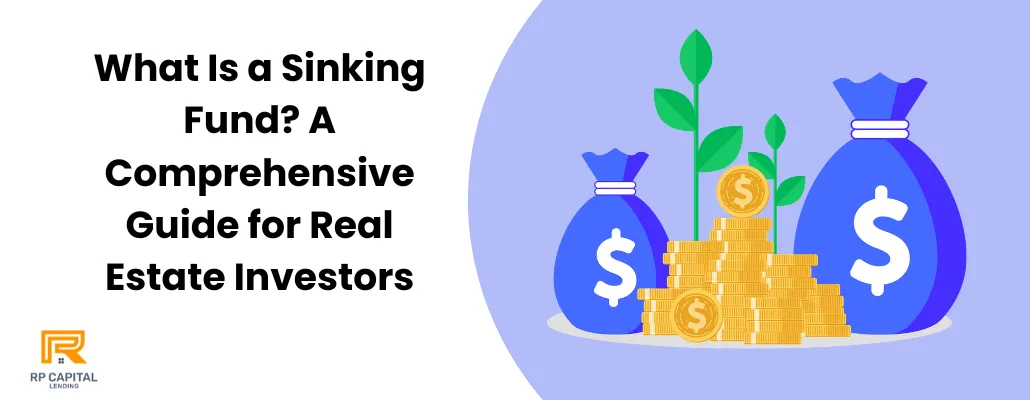Blog

What Is a Sinking Fund? A Comprehensive Guide for Real Estate Investors
Imagine a safety net that grows over time, providing you with financial security when unexpected expenses arise in your real estate ventures. This safety net is known as a sinking fund. In this guide, we will explore what a sinking fund is, why it’s crucial for real estate investors, and how to effectively manage one to safeguard your investments.
What Is a Sinking Fund?
A sinking fund is a dedicated savings account used to set aside money over time for large, anticipated expenses. For real estate investors, this fund is essential for covering costs like major repairs, renovations, or property upgrades. By regularly contributing to a sinking fund, investors can avoid financial strain and ensure the longevity of their investments.
Importance of a Sinking Fund in Real Estate
Financial Preparedness: Having a sinking fund means you are always prepared for significant expenses, reducing the risk of financial stress.
Property Maintenance: Regular contributions ensure that you have the necessary funds for property upkeep and improvements, maintaining the property's value.
Avoiding Debt: By saving in advance, you can avoid taking on debt to cover large expenses.
Investment Longevity: A well-maintained property attracts better tenants and retains its market value longer, enhancing your investment’s profitability.
How to Set Up a Sinking Fund
Determine Future Expenses: Estimate the cost of major repairs, renovations, or other significant expenses you may encounter.
Set a Savings Goal: Based on your estimates, set a target amount for your sinking fund.
Regular Contributions: Decide on a monthly or quarterly contribution amount and stick to it.
Choose the Right Account: Select a high-yield savings account to maximize the growth of your sinking fund.
Review and Adjust: Regularly review your fund and adjust contributions as necessary to meet your financial goals.
FAQs About Sinking Funds
1. What is the difference between a sinking fund and an emergency fund?
Answer: A sinking fund is for planned, significant expenses, while an emergency fund is for unexpected, urgent expenses. Both are essential but serve different purposes.
2. How much should I contribute to my sinking fund?
Answer: The amount depends on your anticipated expenses and the timeline for those expenses. Start by estimating the costs and divide that by the number of months until the expense is due.
3. Can I use my sinking fund for emergencies?
Answer: Ideally, you should maintain separate funds for planned expenses and emergencies. However, in dire situations, you can use the sinking fund, but it’s best to replenish it as soon as possible.
4. Where should I keep my sinking fund?
Answer: A high-yield savings account is a good option because it provides easy access to funds while earning interest.
5. Is a sinking fund only for real estate investors?
Answer: No, anyone can benefit from a sinking fund. It’s a smart financial strategy for anyone anticipating significant future expenses.
Conclusion
A sinking fund is an invaluable tool for real estate investors, providing financial security and ensuring that properties remain well-maintained and valuable. By planning ahead and regularly contributing to this fund, investors can avoid financial stress and keep their investments in top condition.
RP Capital Lending is a d.b.a of RP Capital Partners Inc (NMLS # 2469193) | Privacy Policy
Copyright © 2022. All Rights Reserved.
Disclaimer: Loans only apply to non-owner occupied properties. Rates, terms and conditions offered only to qualified borrowers, may vary upon loan product, deal structure, other applicable considerations, and are subject to change at any time without notice.

